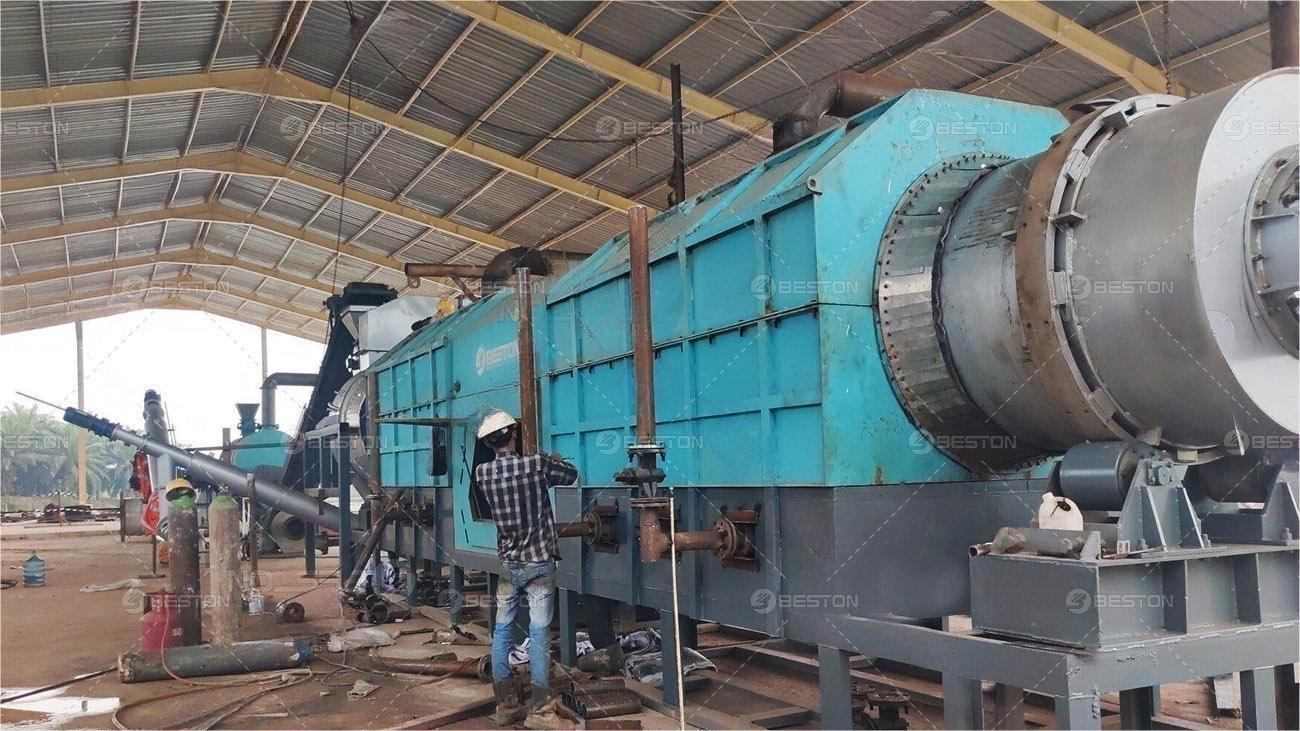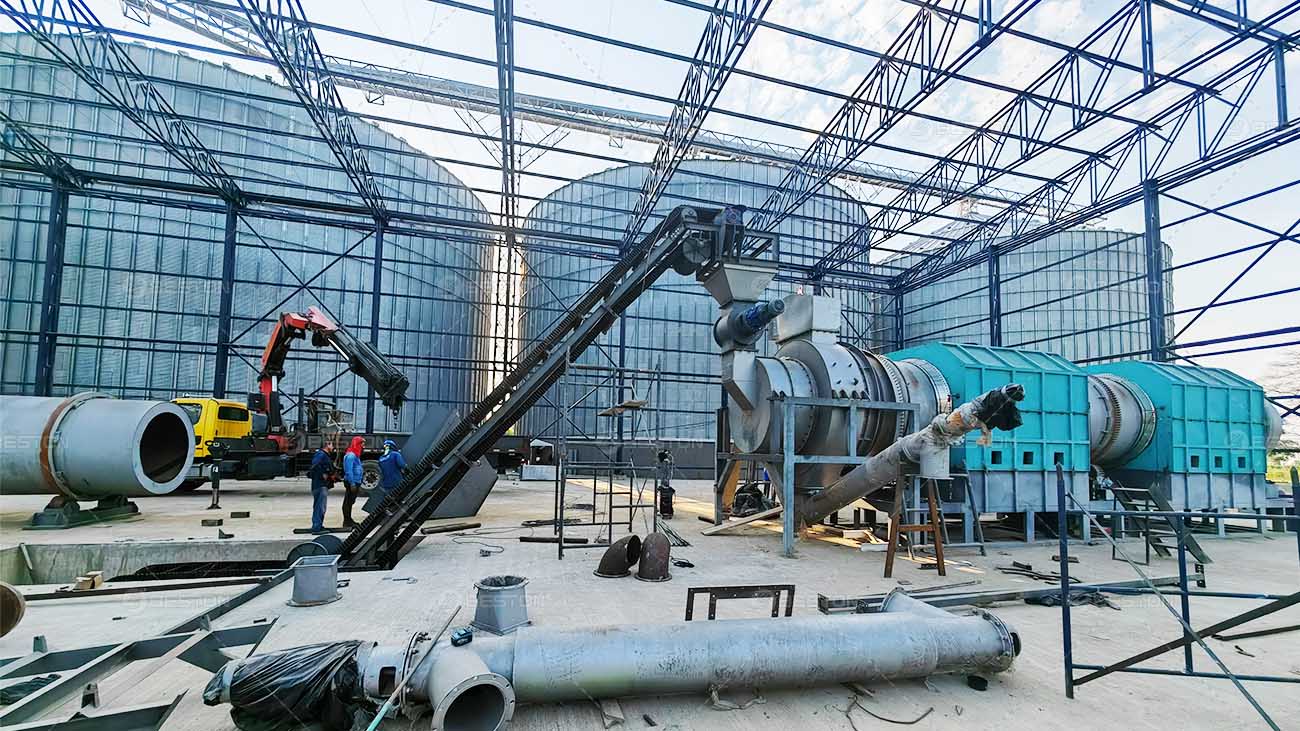In the realm of sustainable practices, the journey from coconut shell to biochar stands as a testament to technological ingenuity and environmental responsibility. Central to this transformation is the intricate dance of specialized machinery – the biochar equipment. This article delves into the nuanced workflow of this equipment, exploring the stages, mechanisms, and the pivotal role it plays in converting coconut shells into a valuable, eco-friendly resource.
The Genesis: Coconut Shell Selection
The journey commences with the meticulous selection of coconut shells, a process that involves scrutinizing their quality and composition. The biochar equipment workflow begins with the input of high-quality coconut shells, ensuring that the resultant biochar meets stringent standards for both environmental impact and product efficacy.
Stage 1: Pyrolysis Chamber
The heart of the biochar equipment is the biochar reactor, a controlled environment where coconut shells undergo thermal decomposition. Within this chamber, the temperature is elevated to a precise degree, and the absence of oxygen ensures the transformation of the coconut shells into biochar through a process known as pyrolysis.
Temperature Dynamics
The temperature control within the pyrolysis chamber is a critical parameter. The biochar equipment employs advanced temperature regulation mechanisms to achieve optimal pyrolysis conditions. This precision ensures that the coconut shells are not incinerated but undergo controlled decomposition, retaining their carbon structure.
Stage 2: Gas Capture and Utilization
As the coconut shells undergo pyrolysis, volatile gases are released. The biochar equipment includes a gas capture system, diverting these gases for utilization. This not only minimizes emissions but also transforms a potential environmental concern into an energy resource.
Syngas Production
The captured gases, often composed of hydrogen and carbon monoxide, are collectively known as syngas. This syngas can be harnessed as a secondary product with applications in power generation or as a feedstock for other industrial processes. The dual output adds a layer of sustainability to the biochar production process.
Stage 3: Biochar Collection and Conditioning
Upon completion of the pyrolysis process, the biochar is meticulously collected from the pyrolysis chamber. The biochar equipment incorporates systems for efficient collection, ensuring minimal loss and maintaining the quality of the produced biochar.
Conditioning for Agricultural Use
The biochar undergoes a conditioning phase, where its physical and chemical properties are tailored for specific applications, particularly in agriculture. This conditioning process enhances the biochar’s ability to improve soil structure, retain nutrients, and contribute to sustainable farming practices.
Technological Advancements in Biochar Equipment
Automation and Control Systems
Modern iterations of coconut shell charcoal machine are characterized by advanced automation and control systems. These systems not only streamline the workflow but also enhance the efficiency and reliability of the entire process. The integration of sensors, actuators, and real-time monitoring ensures that the pyrolysis conditions are consistently optimized.
Remote Monitoring
In a nod to the digital age, some biochar equipment incorporates remote monitoring capabilities. This allows operators to oversee and adjust the pyrolysis process from a distance, fostering operational flexibility and reducing the need for on-site presence.

Carbonization Retort Design
The carbonization retort, a crucial component of biochar equipment, has witnessed design innovations aimed at maximizing efficiency. The geometry, insulation, and materials used in the retort contribute to heat retention, ensuring that the pyrolysis process is energy-efficient and cost-effective.
Multi-Stage Retorts
Some advanced biochar equipment employs multi-stage carbonization retorts, allowing for sequential pyrolysis at different temperature ranges. This sophisticated design enhances the versatility of biochar production, enabling the customization of biochar properties for specific applications.
Environmental Implications and Sustainability
Carbon Sequestration Potential
The conversion of coconut shells into biochar through biochar equipment holds significant environmental benefits. Biochar, when added to soil, acts as a carbon sink, sequestering carbon and mitigating greenhouse gas emissions. This carbon-negative aspect aligns with global efforts to combat climate change.
Soil Improvement
Beyond carbon sequestration, biochar’s addition to soil enhances its fertility and structure. The porous nature of biochar promotes water retention and nutrient absorption, contributing to sustainable agriculture practices.
Waste Reduction and Circular Economy
The utilization of coconut shells for biochar production through biochar equipment exemplifies a circular economy model. Instead of allowing coconut shells to become waste, they are repurposed into a valuable resource, reducing the overall environmental impact of coconut processing.
Economic Considerations: Evaluating the Investment in Biochar Equipment
Capital Investment
Investing in biochar equipment involves a capital outlay, influenced by factors such as capacity, technology, and automation level. While the initial investment may seem substantial, the long-term benefits, both economically and environmentally, position it as a strategic choice for industries and agricultural enterprises.
Operational Costs and Return on Investment
Beyond the initial investment, operational costs play a crucial role in evaluating the economic feasibility of biochar equipment. These costs encompass raw material procurement, energy consumption, maintenance, and labor. The return on investment (ROI) is a key metric that considers the revenue generated from biochar sales and other byproducts. If you are interested in coconut shell biochar production projects, please contact Beston Group China.

The Future Landscape of Biochar Production
As technology continues to advance, the future landscape of biochar production through biochar equipment holds promise. Ongoing research focuses on improving efficiency, reducing energy consumption, and exploring alternative feedstocks for biochar production. The evolving synergy between technological innovation and environmental sustainability positions biochar as a cornerstone in the transition towards a circular and eco-friendly economy.
In conclusion, the journey from coconut shell to biochar, orchestrated by sophisticated biochar equipment, embodies a harmonious convergence of technology, environmental stewardship, and economic viability. This sustainable solution not only addresses waste management challenges but also contributes to soil health, carbon sequestration, and the broader goals of a greener and more resilient future.